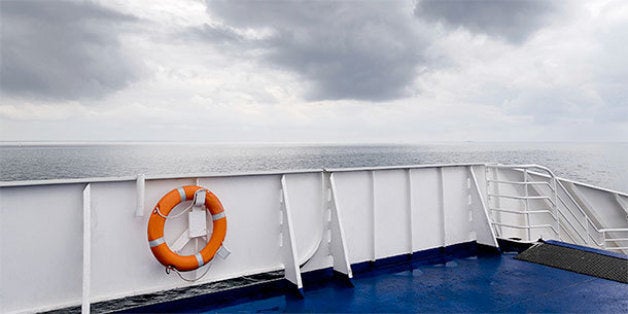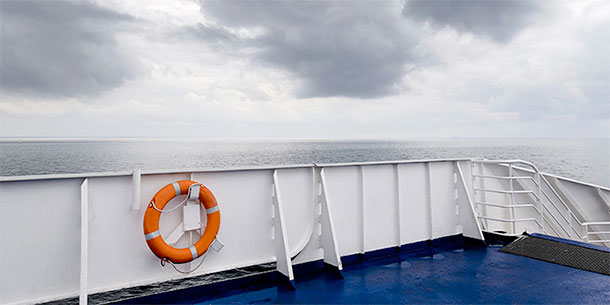

Darkening sky often means one thing for seasickness-prone cruisers: Nausea ahead. - Photo by Thinkstock
Getting seasick on a cruise can easily ruin your vacation. Whether you're a first-time cruiser or a seasoned one, it's important to know what you can do to ensure that rough seas don't banish you to your cabin. Here's what to pack (and do) before you set sail:
1. Choose a ship with fin stabilizers.
These large, underwater "wings" on the left and right of the ship help keep it straight and upright. The newer the ship, the more advanced the stabilizers, which will keep the vessel steady in rougher conditions.
2. Select your itinerary carefully.
Though storms and high winds can occur anywhere and at any time, certain regions are known for particularly rough waters. Avoid ocean crossings, Mediterranean sailings during fall and winter, the Caribbean during hurricane season (June through November), and Alaska cruises that pass through the Pacific.
3. Book the right cabin.
Passengers in bow cabins -- at or near the front of the ship --and staterooms in the highest decks will feel the most motion. Midship cabins, which are always first to be sold out, are least motion-sensitive.
4. Pack prescription medication.
Acupressure wristbands and antihistamines, such as Dramamine®, are available without prescriptions and may work for some. But Transderm Scōp®, the small, prescription patch applied behind the ear, is considered the most effective and long-lasting of anti-seasickness drugs. Best of all, it's less likely to make you drowsy than over-the-counter medications, and more likely to work than homeopathic options.
5. Act quickly.
Pay attention: The first symptom can be as harmless as yawning. If winds are picking up and you start to notice heavier rocking, take your meds and move to a less motion-sensitive area of the ship before seasickness hits.
Transderm Scop is a registered trademark of Novartis AG.
By Polina Myagkov
BonVoyageMag.com
A publication of Cruiseline.com